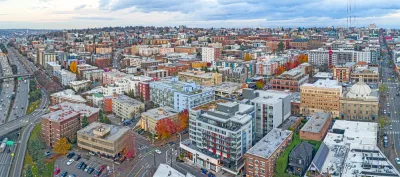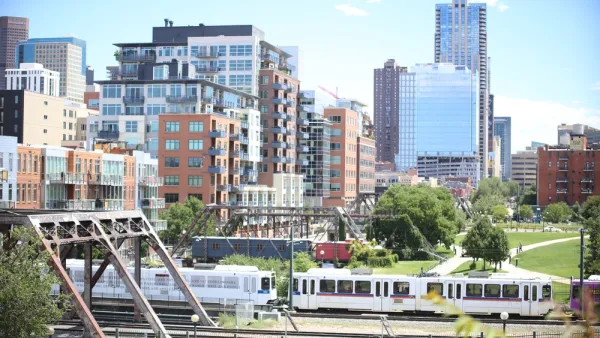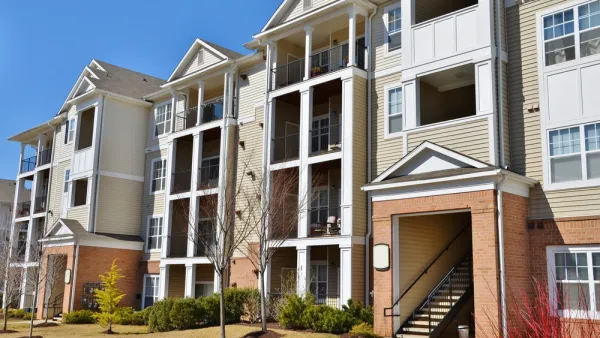Everything you've ever wanted to know about inclusionary zoning: its history, its position in the debate about the future of cities, and its promise as a solution to the nation's housing crisis.

"Increasingly, cities are formalizing the requirement that new residential development include a percentage of affordable homes, the policy known as inclusionary housing," writes Anthony Flint.
Flint positions inclusionary zoning as a policy compromise that bridges the political platforms of pro-development YIMBYs and low-income communities and social justice advocates concerned about the gentrification and displacement effects of new development.
Inclusionary zoning also strikes a compromise in balancing the carrots and sticks of policy. For examples of carrots, Flint writes, "Given the high price of urban land, which makes housing so expensive, many cities are supplementing inclusionary requirements with direct actions such as providing government-owned land for affordable housing." A Sound Transit program in Seattle exemplifies that approach.
For sticks, Flint cites examples in New Jersey and Massachusetts: "Courts in New Jersey have for decades enforced the state’s 'fair share' housing laws, stemming from the landmark Mount Laurel decisions. In Massachusetts, under Chapter 40-B, housing gets fast-tracked if municipalities fail to maintain at least 10 percent of their housing stock as affordable to those earning 80 percent of median area income."
Writing for the Lincoln Institute of Land Policy, Flint also identifies land value capture as the foundation of the inclusionary zoning mandate— "[allowing] the public to recover some of the increased property value enjoyed by landowners as the result of government actions like rezoning."
This feature-length article includes a historical narrative about the rise of NIMBY and YIMBY politics; analysis of the complexities of inclusionary zoning, and how it responds to a complex political environment; numerous examples of inclusionary zoning policies around the country; and frequent references to literature supporting the thinking described in the article.
FULL STORY: Backyard Brouhaha

National Parks Layoffs Will Cause Communities to Lose Billions
Thousands of essential park workers were laid off this week, just before the busy spring break season.

Retro-silient?: America’s First “Eco-burb,” The Woodlands Turns 50
A master-planned community north of Houston offers lessons on green infrastructure and resilient design, but falls short of its founder’s lofty affordability and walkability goals.

Delivering for America Plan Will Downgrade Mail Service in at Least 49.5 Percent of Zip Codes
Republican and Democrat lawmakers criticize the plan for its disproportionate negative impact on rural communities.

Test News Post 1
This is a summary

Test News Headline 46
Test for the image on the front page.

Balancing Bombs and Butterflies: How the National Guard Protects a Rare Species
The National Guard at Fort Indiantown Gap uses GIS technology and land management strategies to balance military training with conservation efforts, ensuring the survival of the rare eastern regal fritillary butterfly.
Urban Design for Planners 1: Software Tools
This six-course series explores essential urban design concepts using open source software and equips planners with the tools they need to participate fully in the urban design process.
Planning for Universal Design
Learn the tools for implementing Universal Design in planning regulations.
EMC Planning Group, Inc.
Planetizen
Planetizen
Mpact (formerly Rail~Volution)
Great Falls Development Authority, Inc.
HUDs Office of Policy Development and Research
NYU Wagner Graduate School of Public Service





























